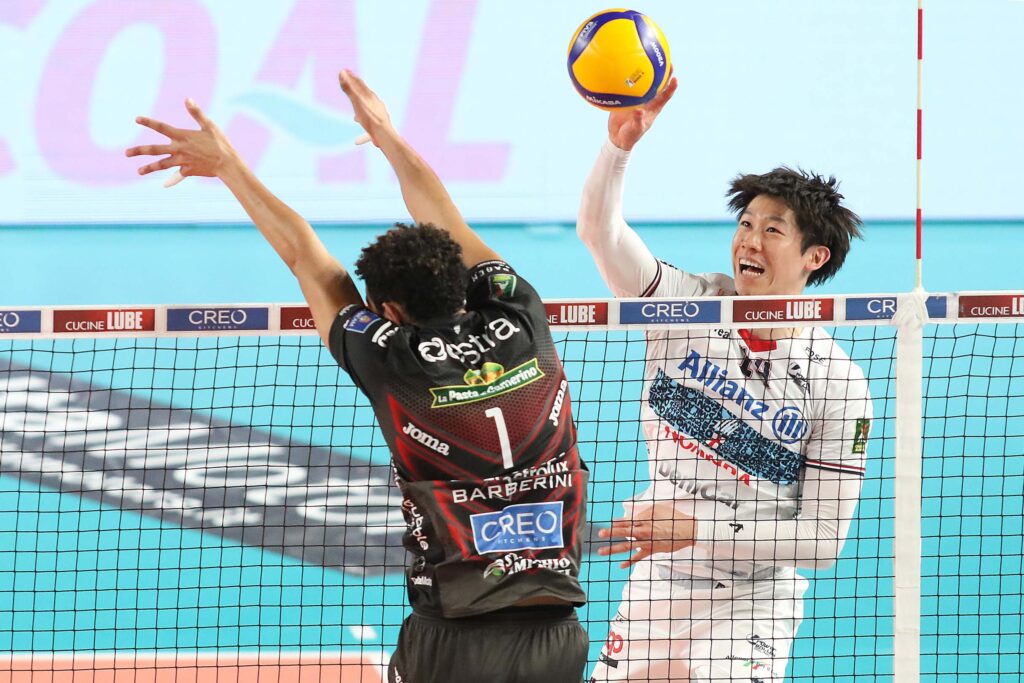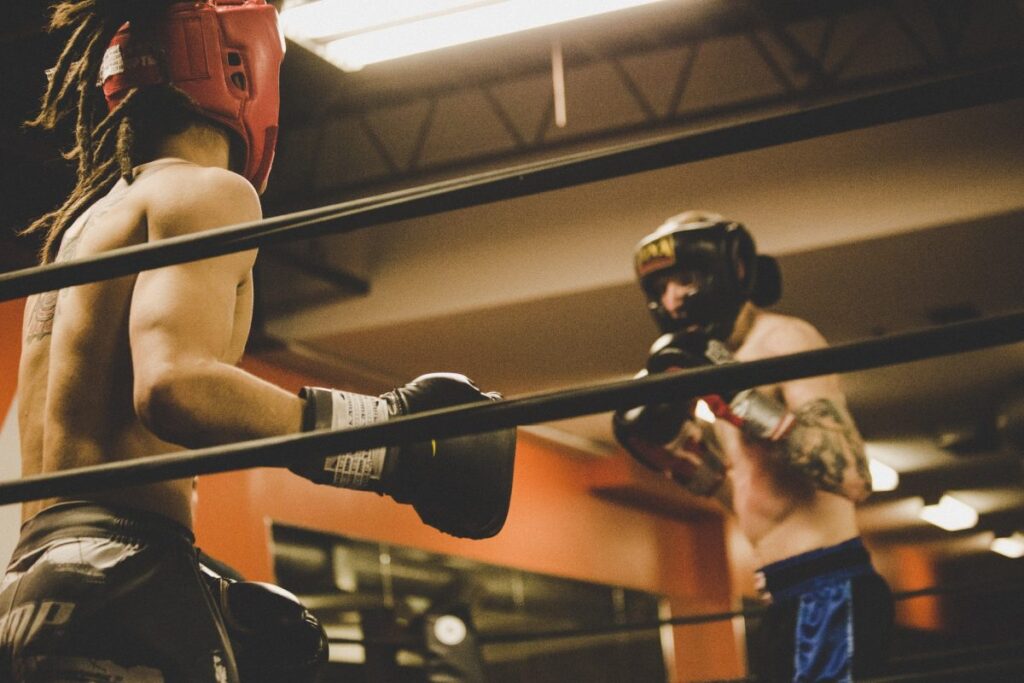
In kendo, the technique called “dehanamen” is an important element that allows for vivid strikes in matches and for improving techniques in daily practice.
In this article, we will explain in detail the basic concept of Dehanamen, how to effectively hit it, and how to practice it.
目次
What is the Dehanamen in Kendo?
In kendo, “dehana men” refers to the technique of catching the opponent’s initial movement before they launch a technique, and taking the lead and striking the men (face).
This technique requires a high degree of insight and quick judgment, as it requires predicting the opponent’s movements and striking quickly and with good timing.
Technical definition of protrusion
Dehanemen literally means “to take out the nose,” and is used to seize the moment when the opponent begins to attack and perform a preemptive attack.
This technique is one of the most effective tactics in kendo matches, and can also put psychological pressure on your opponent.
In order to succeed in Dehanamen, it is essential to have a high level of concentration to read the other person’s intentions and to act quickly.
Basic knowledge of protrusion
In order to master Dehamen, you need to be able to master the basic Kendo postures and movements naturally.
It is important to combine quick foot movements (footwork) from the correct posture and swing of the sword (kensabaki) to strike the men with precise timing.
In addition, when performing this technique, it is necessary to pay attention to the opponent’s small movements, breathing, and eye movements, and to develop the ability to anticipate the opponent’s attack intentions.
Dehanamen in Kendo is more than just technique; it requires a deep understanding of Kendo and psychological warfare, so it requires a lot of practice and experience.
Mastering this will give you a strategic advantage in Kendo matches.

Important points for successful nose protrusion
In order to successfully perform a dehane men in kendo, you need not only technical mastery but also the insight to accurately read your opponent’s movements.
In this section, we will introduce techniques for how to effectively strike the nose and assess your opponent’s movements.
How to hit the nose effectively
It is important to keep the following points in mind when hitting the protrusion side:
- Stabilize your posture : Relax and distribute your weight evenly while maintaining correct kendo posture. Stable posture allows you to move quickly.
- Be proactive : Try to move a moment faster than your opponent. This requires the foresight to anticipate the other person’s intentions.
- Accurate impact point : Accurately identify the impact point on the surface and hit powerfully and quickly. The key is to hit the ball firmly in the center of the surface.
Techniques to assess your opponent’s movements
In order to successfully perform a deman, you need to be sensitive to your opponent’s subtle signs and movements:
- Feel their breathing : When someone’s breathing becomes irregular or when they inhale deeply, their movements tend to increase. Don’t miss this and use it as a timing to attack.
- Change in gaze : By capturing the moment when the other person’s gaze changes, it becomes easier to predict their next move. In particular, your gaze often tells you when you are about to attack.
- Shift your weight : If you catch the moment when your opponent’s weight shifts forward, it will be easier to detect the signs of an attack. Use this as a punch for the nose surface.
In a Kendo match, catching these small signs and responding quickly will lead to victory.
Dehanamen is not just a technique, it is also very effective as part of psychological warfare with your opponent.
By incorporating these points into practice and applying them in actual combat, you will be able to increase your success rate.

How to practice protruding nose and drills
Dehamen is one of the most advanced techniques in Kendo, and it requires correct practice methods and repeated drills to master it.
Below, we will introduce effective practice methods and specific drills that can be used by everyone from beginners to advanced players.
Checking basic posture and movements
Before you begin practicing Debashimen, it is important to review and modify your basic posture and sword handling. If the posture is not correct, it will be difficult to move quickly and the success rate of the nasal protrusion will decrease.
-
Maintaining basic posture
- Stand with your feet shoulder-width apart and your knees slightly bent to stabilize your lower body.
- Stretch your back and try to breathe naturally.
-
Correct way to hold a sword
- Keeping your sword firmly gripped and flexible at the same time allows for quick reactions.
Drill specifically for the nose surface
By incorporating the following drills into your daily practice, you can improve your nose protrusion technique.
-
Drills to predict your opponent’s movements
- Practice Face your opponent and practice hitting them in the face the moment your opponent makes a small movement. At this time, judge the timing while paying attention to the movements of the opponent’s eyes, hands, and feet.
-
Drill to increase reaction speed
- Practice hitting your face as quickly as possible the moment your opponent or coach gives the signal. This drill is effective not only for improving reaction speed but also for increasing prediction accuracy.
-
Shadow strike
- Repeat the protruding nose motion without an opponent and check your form. Doing this in front of a mirror allows you to see your movements objectively.
Practical practical application
By practicing under conditions similar to actual combat, you will practically hone your technique.
- By regularly holding practice matches and competing against various types of swordsmen, he expands the scope of application of Dehamen.
- Develop composure and concentration under pressure through repeated practice in a match format.
These practice methods and drills are useful for general kendo techniques, but they are especially effective for mastering dehamen.
By practicing daily, you will be able to master this difficult technique and gain an edge in competition.

Tactics using the nose mask and its application in matches
In kendo matches, the dehamen is known to be a very effective technique.
By using this technique tactically, you can give your opponent an overwhelming advantage.
Here, we’ll delve into a tactical approach to how to effectively use the denominator in a real game.
Timing of nose protrusion
The success of protruding noses is highly dependent on timing. During a match, aim for the nose at the moment when your opponent is about to attack, especially at the following times:
- The moment before your opponent launches an attack : Your target is the moment your opponent shifts their weight forward or begins to raise their shinai for an attack.
- After your opponent has stopped moving : Don’t miss the opportunity when your opponent temporarily stops moving and moves on to the next move.
Situational judgment and psychological warfare
When using the protruding nose mask, it is not just a matter of timing. It is important to read the opponent’s psychological state and the flow of the match.
- When you sense your opponent’s impatience or fatigue : When your opponent starts to become impatient or tired and defenseless, this is the perfect opportunity to show off.
- When you are in the lead : You can expect your opponent to become aggressive in an attempt to take back points, so you can further expand your lead by being proactive.
Repeated practice and match practice
The protrusion of the nose is improved not only through practice, but also through active use in actual matches. As you play more matches, you will gain experience such as:
- Improved ability to quickly grasp opponent’s movements
- Developing the psychological strength to remain calm under pressure
In order to effectively use the Dehanamen in matches, repeated practice during daily training is essential.
In addition, through experience in matches, you will improve your ability to adapt to various opponents and grow into more sophisticated techniques.

Frequently asked questions and answers: Clearing your doubts about the protruding nose
Although Dehanamen is an effective technique in Kendo, many Kendo enthusiasts have questions about the correct understanding and how to practice it.
Below are some frequently asked questions and answers about the protruding nose.
Q1: What kind of technique is Dehamen specifically?
A1: Dehana Men is a technique that captures the moment when the opponent begins to attack and takes the initiative and strikes the men (face part). The purpose of this technique is to predict the opponent’s initial move and react quickly to deliver a blow.
Q2: What is the correct way to hit the denomen?
A2: The correct way to hit the nose plane includes the following elements:
- Timing Accuracy : React quickly at the moment your opponent’s move begins.
- Accurate sense of distance : Accurately measure the distance to your opponent and strike at an effective striking distance.
- Mastery of techniques : It is important to practice basic kendo postures and movements so that they come naturally.
Q3: What are the key points when practicing the protruding nose?
A3: Please keep the following points in mind when practicing the protruding nose:
- Increase concentration : You need concentration to read the other person’s minute movements and intentions.
- Improve your reaction speed : Increase your reaction speed through drills and shadow practice.
- Practice in a real competition format : It is important to practice in a real competition format and gain experience in being able to calmly execute techniques under pressure.
Q4: How should the Debanamen be used in a match?
A4: The following strategies are effective for using the nose mask in matches:
- Analyze your opponent’s attack patterns : Understand your opponent’s general attack patterns and habits in advance and identify opportunities to attack.
- Use psychological warfare : Create a situation in which your opponent is likely to become aggressive, and use that reaction to show off.
These questions and answers provide useful information for understanding and practicing Dehana Men who aim to improve their Kendo skills.
Proper knowledge and practice are essential to mastering this technique.

summary
In kendo, the technique known as “dehana men” is a tactical blow that anticipates the opponent’s movements and takes the first move, and its success depends on precise timing and great insight.
In this article, we provide a detailed explanation of this important Kendo technique, from the basic definition of Dehamen to practical strikes, effective practice methods and drills, and even tactical applications in matches. .
In order for everyone from beginners to advanced players to understand and master Dehamen, it is necessary to firmly acquire basic techniques and improve the ability to sensitively perceive the movements of the opponent.
Additionally, during practice, it became clear that drills and practical exercises that increase reaction speed are particularly important.
In a match, using psychological tactics to catch your opponent by surprise is the key to success.
For anyone learning Kendo, Dehanamen is more than just a technique.
It is a dialogue with the other person, and it is also a practice to improve the accuracy of momentary judgments and reactions.
Mastering this technique will deepen your understanding of Kendo and improve your performance in matches.
Practicing and applying Dehana Men is a constantly evolving process in your Kendo journey.




